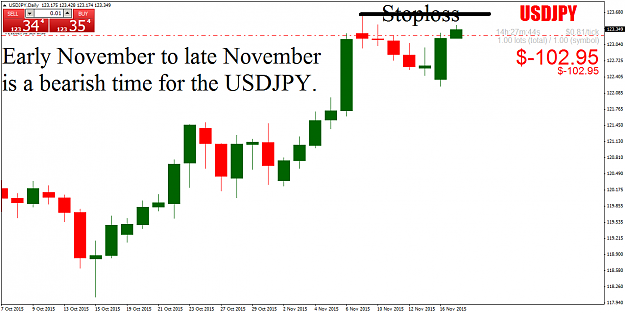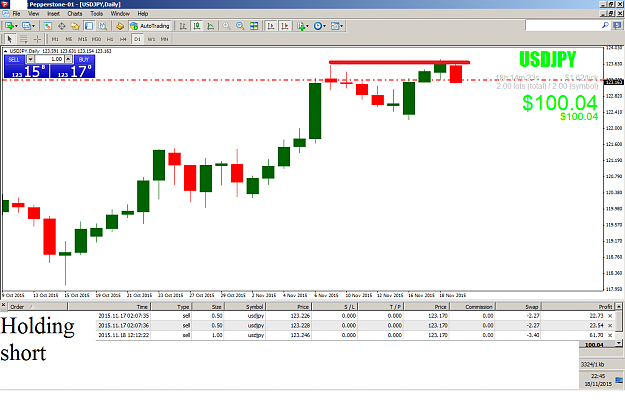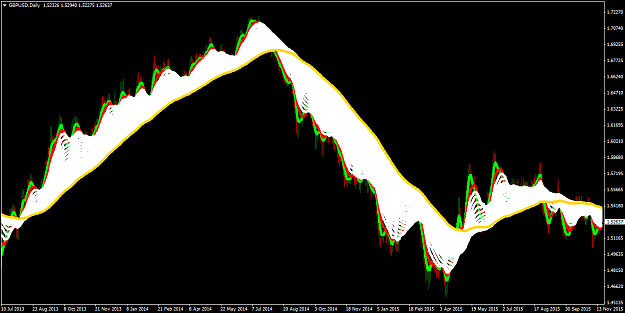Inspired by a Larry Williams lecture that I watched online last night, I would like to know more about whether the seasonal tendencies, holidays, relationships and special situations that Larry successfully trades the S&P with also exist in the FX markets, and to what extent they could improve my trading results.
To give an example or two of what Mr Williams spoke about, through studying empirical evidence for the last 40 years or so he realised that certain trading days have a tendency to go either up, down, or remain flat. For instance, on the 21st and 22nd day of the trading month (the last two days, there are usually 22 trading days per month, but on some there are 21 in which case the bias was carried over to the 1st day of the next trading month) there was a particularly strong tendency for the S&P to rally - as much as 65-70% of these days were bull days, and producing some big moves. So each and every month over the last 40 years (or as long as you knew about it) you could have traded this strategy alone with reasonable success. Introducing some kind of filter could have made the results even better.
Williams also noted that the stock market tends to rally before holidays, on other particular days of each month and that some months were more likely to produce large positive shifts than others.
Now that is all very well for those who trade the S&P, they can look into this research and incorporate it into their trading. I am certain that there are plenty of FX traders who have done similar research and discovered these patterns also exist in these markets. It's just a case of either doing the research, or even better, find where this research is.
I have looked around this forum and haven't found much about it. If there isn't already (and if there is please tell me where!), we could compile the research here in this thread.
Here's a start:
http://www.actionforex.com/articles_...2007082327072/
And if anyone wants to watch the Larry Williams video you can watch it at http://tv.ino.com/free/ but you'll have to sign up.
To give an example or two of what Mr Williams spoke about, through studying empirical evidence for the last 40 years or so he realised that certain trading days have a tendency to go either up, down, or remain flat. For instance, on the 21st and 22nd day of the trading month (the last two days, there are usually 22 trading days per month, but on some there are 21 in which case the bias was carried over to the 1st day of the next trading month) there was a particularly strong tendency for the S&P to rally - as much as 65-70% of these days were bull days, and producing some big moves. So each and every month over the last 40 years (or as long as you knew about it) you could have traded this strategy alone with reasonable success. Introducing some kind of filter could have made the results even better.
Williams also noted that the stock market tends to rally before holidays, on other particular days of each month and that some months were more likely to produce large positive shifts than others.
Now that is all very well for those who trade the S&P, they can look into this research and incorporate it into their trading. I am certain that there are plenty of FX traders who have done similar research and discovered these patterns also exist in these markets. It's just a case of either doing the research, or even better, find where this research is.
I have looked around this forum and haven't found much about it. If there isn't already (and if there is please tell me where!), we could compile the research here in this thread.
Here's a start:
QuoteDislikedCanadian Dollar: End of Month Trading Anomaly
Did you know that the Canadian dollar has a very unique trading characteristic at the end of every month? According to our statistical analysis, we found that over the past 10 years, USD/CAD tends to fall in the last week of the month with a 95 percent confidence level. A more granular look at the data reveals that this drop is predominately concentrated around the 24th and 25th day of every month. Interested in knowing why this happens? Settlement of Oil Futures
The trading anomaly in USD/CAD stems from the fact that Canada is one of the world's largest oil producers. Their oil reserves are also second to only Saudi Arabia. Canada is also the top exporter of oil and other petroleum products to the United States, making the US dollar-Canadian dollar exchange rate especially correlated to energy prices and related money flows...........................
http://www.actionforex.com/articles_...2007082327072/
And if anyone wants to watch the Larry Williams video you can watch it at http://tv.ino.com/free/ but you'll have to sign up.


